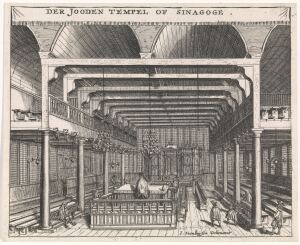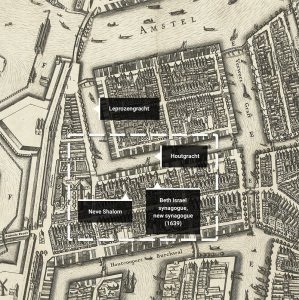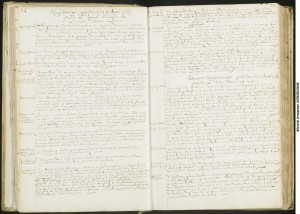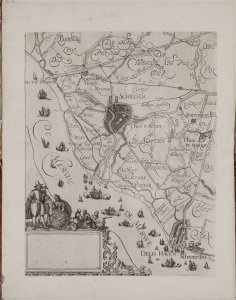The Huygens’s residence (1634–7, demolished in 1876) at the Plein in The Hague was designed by Constantijn Huygens Sr. The land at the ‘Plaats’ (literally: ‘Place’) where he built that palatial palazzo was given to him by Frederik Hendrik in 1634. The house is the subject of Huygens’s (unfinished) literary work Domus (1639). The plan of the Hofwijck estate, based on concepts of architect Marcus Vitruvius Pollio (fl.85–20 BCE), was designed by... Read more
Locations
Presumably, Spinoza was born in a house somewhere in or around the Vlooienburg quarter, but archival records are missing.
Vlooienburg (also ‘Vloonburch’ or ‘Vloënburch’, origin of the toponym uncertain, translation: embankment) was the name of a rectangular artificial island—in front of the islands Rapenburg, Marken and Uilenburg—in the bed of the river Amstel. The embankment was originally heightened for the storage of wood at the ve... Read more
Between early September 1669 and early February 1671, Spinoza rehoused from Voorburg to The Hague, where he rented rooms at the Stille Veerkade (now no. 32) from a widow called ‘Van Velen’, at the rear end of the house, at the second floor. The house was just around the corner of the Paviljoensgracht, the address where he would later rent a room at the house of decoration painter Hendrick van der Spijck. His clandestinely published Tractatus theolo... Read more
According to a floor map (1772) of the Nieuwe Kerk, Spinoza was buried in a vault at the church entrance (no. 162). His grave was close to that of Grand Pensionary Johan de Witt (1625–1672). The municipal burial registers of The Hague report about the vault: ‘Rented vault 162 … on the same [day] is also buried Benedictus Spinoza, [who] lived opposite the almshouses of the Holy Spirit, 12 guilders’. The vault was cleared during the 18th century... Read more
Spinoza resided in Rijnsburg from [29 July 1661] to late April/July 1663. He rented rooms in a small domestic dwelling owned by a surgeon called Herman Dircksz Homan (Katwijkerlaantje, also known as Kwakkellaantje or Paradijslaantje, nowadays Spinozalaan 29). The house where Spinoza lived for almost two years is located at a piece of land that in the mid-1660s was commonly known in the Rijnsburg community as ‘Vrouwen Venne’. Far away from his old life,... Read more
Spinoza relocated to The Hague, presumably sometime after 5 September 1669. Initially, he lodged at the Stille Veerkade. During the 1670s, Spinoza moved to the Paviljoensgracht (just around the corner of the Stille Veerkade ) where he took lodgings in the front room of the house of decorative painter Hendrick van der Spijck (nos 72–74, formerly Burgwal). His room was at the first floor. He died there on 21 February 1677. The house of Van der Spijck still stands to... Read more
Beth Haim was the Portuguese-Israelite cemetery in Ouderkerk aan de Amstel. The grounds of Beth Haim cemetery were purchased in 1614 (Hagoort, 2005). This still extant cemetery is about a two-hour walk from Amsterdam. Documentary evidence for the presence of members of the Espinosa family in Amsterdam is contained in the burial registers of Beth Haim preserved in the Amsterdam archives. Many people who were in close contact with Spinoza and/or his family were ... Read more
Somewhere between 21 April and 3 August 1663, Spinoza moved to Voorburg where he lived in the house in the house of the painter Daniel Harmensz Tydeman. He would stay there until between early September 1669 and mid-February 1671, when he relocated to The Hague. During the first years in Voorburg, Spinoza cemented long-life relations with his friends in Amsterdam. He especially gravitated to the doctor of medicine Lodewijk Meyer, founder of the literary and artistic society ... Read more
Amsterdam tax registers on income from letting property (‘Verpondings-quohier van den 8sten penning’, concerning the so-called ‘eight-penny tax’), dating from the early 1650s, show that Spinoza's father Michael d'Espinosa rented a brick house from a certain Willem Kick at the edge of the Vlooienburg quarter.
That house was located in the corner of the Houtgracht and Leprozengracht (both canals were filled in in 1882) in the old ... Read more
Rieuwertsz Sr. was one of the most productive and influential publishers in Amsterdam of his own time. Spinoza's contacts with him and with like-minded dissenting spirits who frequented his bookstore ‘in ’t Martelaarsboek’ (‘In the Book of Martyrs’) in the Dirk van Assensteegh (nowadays the Dirk van Hasseltsteeg, running off the Nieuwezijds Voorburgwal, close to the Nieuwendijk) were of crucial importance for him.
In the ... Read more
Spinoza stayed in the trading port of Schiedam between late December 1664–mid-February 1665, quite possibly to escape the plague that swept The Hague and surrounding villages. Spinoza planned to stay only briefly in Schiedam. On January 5, he wrote in the postscript of a reply to Van Blijenbergh: ‘I shall be at this orchard three or four weeks longer, and then I intend to return to Voorburg’ (1665.01.05, Ep. 19). Despite his plans, Spinoza returned to Voorburg s... Read more
Pall Mall (Westminster, West London) was a fashionable and essentially still rural street—running from St James’s street to Haymarket—where several large townhouses were standing. It was the address where Spinoza's correspondent Henry Oldenburg resided. His house was located somewhere in the middle of Pall Mall.
Read more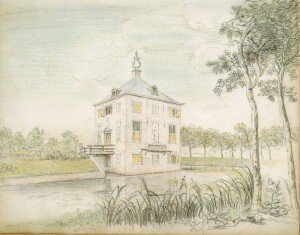
-largethumb.jpg)
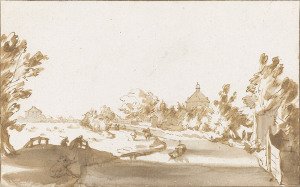
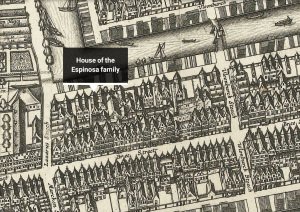
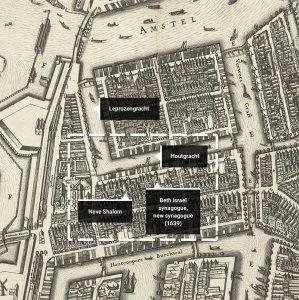
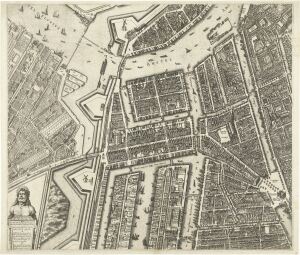
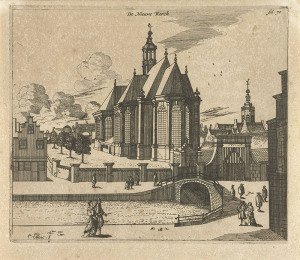
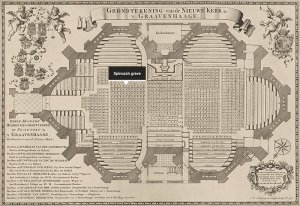
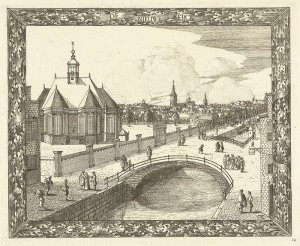
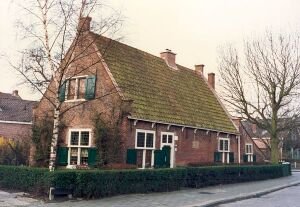
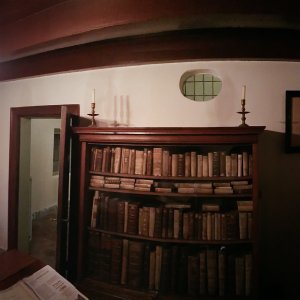
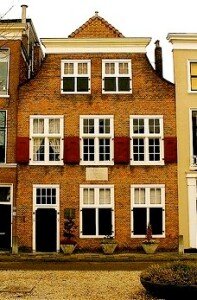
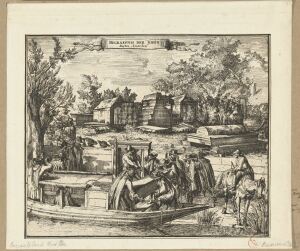
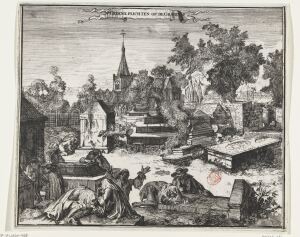
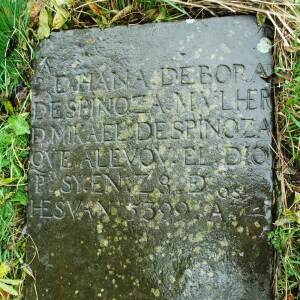
.-largethumb.jpg)
